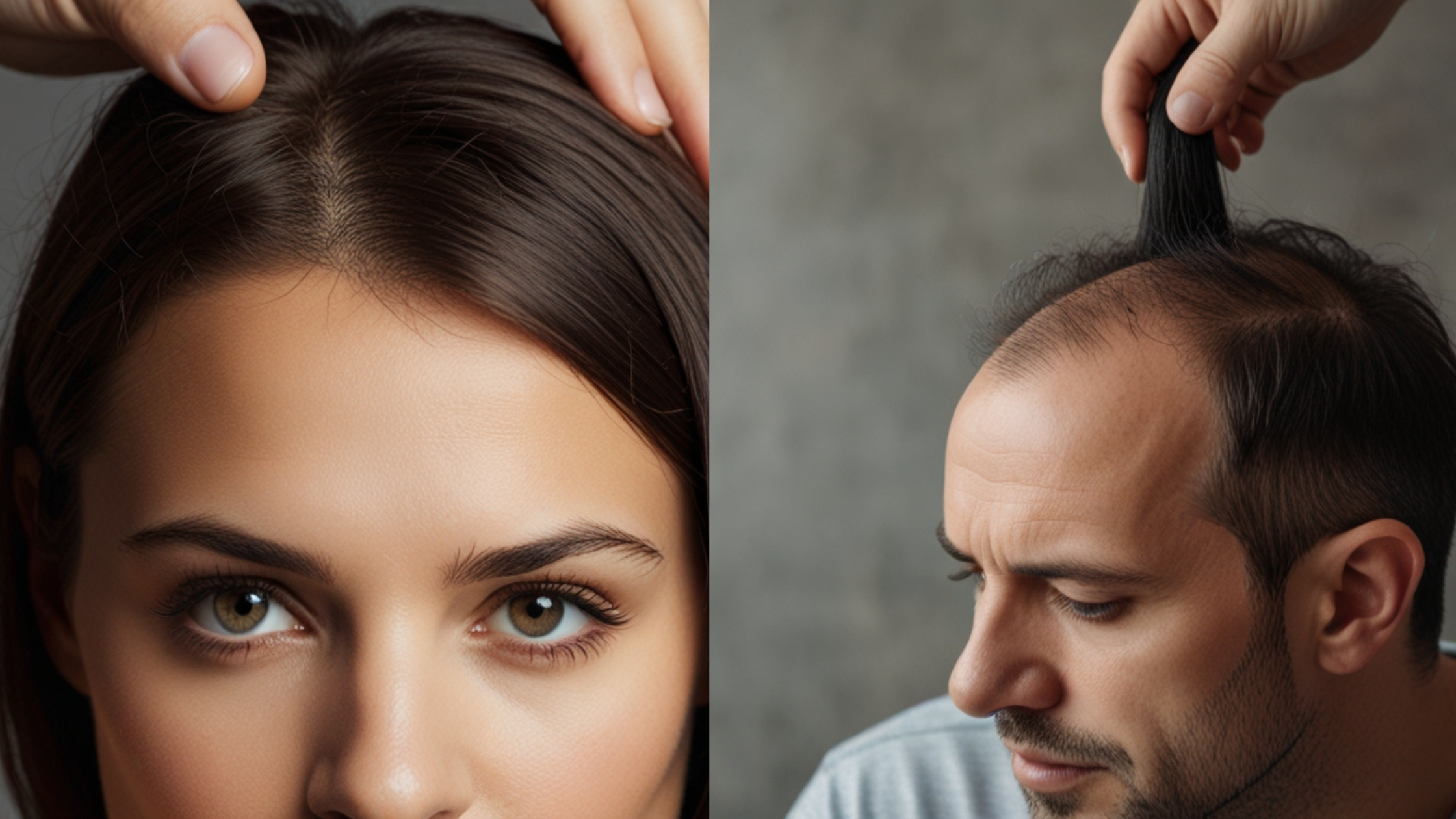Dealing with hair loss can be a frustrating and confidence-shattering experience for both men and women. Whether you’re grappling with male-pattern baldness, female-pattern hair loss, or another type of alopecia, this comprehensive article explores the best hair loss treatments and solutions to help you regain a healthy, full head of hair. From proven medications like minoxidil and finasteride to cutting-edge hair transplant surgery and laser therapy, we’ve got you covered.
In addition to uncovering a wide range of effective remedies, this guide delves into the underlying causes of hair loss, debunks common myths, and provides practical tips for managing this common issue. Whether you’re experiencing thinning, shedding, or a receding hairline, this article aims to equip you with the knowledge and tools you need to address the root causes of your hair loss and achieve your desired hair goals.
Key Takeaways
- Explore a comprehensive range of hair loss treatments for both men and women, including medications, surgery, and laser therapy.
- Understand the different types of hair loss and their underlying causes, from genetics and hormones to stress and medical conditions.
- Learn how to separate fact from fiction when it comes to common hair loss myths and misconceptions.
- Discover practical tips and strategies for managing hair loss and promoting healthy hair regrowth.
- Gain insights into the role of DHT (dihydrotestosterone) in hair loss and the effectiveness of DHT blockers.
Understanding Hair Loss
Hair loss, or alopecia, is a complex and multifaceted issue that affects both men and women. To better understand this common condition, let’s delve into the various types of hair loss, the underlying causes, and dispel some of the most prevalent myths and facts surrounding it.
Types of Hair Loss
The most prevalent form of hair loss is androgenetic alopecia, also known as male or female pattern baldness. This type of hair loss is typically genetic and is caused by a sensitivity to the male hormone dihydrotestosterone (DHT), which can lead to gradual thinning and receding of the hairline. Another common form is telogen effluvium, which is often triggered by factors such as stress, illness, or significant life events, causing a temporary increase in hair shedding. Alopecia areata, on the other hand, is an autoimmune condition that results in patchy hair loss on the scalp or other areas of the body.
Causes of Hair Loss
In addition to genetic predisposition and hormonal imbalances, there are several other potential causes of hair loss. These include medical conditions like thyroid disorders, anemia, or nutritional deficiencies, as well as physical or emotional stress, certain medications, and even the natural aging process. Understanding the underlying cause is crucial for developing an effective treatment plan.
Myths and Facts
When it comes to hair loss, there are many myths and misconceptions that can lead to confusion and misinformation. For instance, the myth that brushing too much causes hair loss has been debunked, as hair shedding is a natural process. Another common myth is that wearing hats or using certain hair products can lead to balding, which is not supported by scientific evidence. By separating hair loss facts from fiction, individuals can make informed decisions about their hair health and seek appropriate solutions.
| Hair Loss Myth | Hair Loss Fact |
|---|---|
| Wearing hats causes hair loss | Hats do not directly cause hair loss |
| Brushing too much leads to hair loss | Hair shedding is a natural process, not caused by brushing |
| Hair products can lead to balding | Most hair products do not contribute to hair loss |
| Stress is the primary cause of hair loss | While stress can exacerbate hair loss, it is not the sole cause |
Hair Loss Treatments for Men

For men struggling with male pattern baldness, there are several effective hair loss treatments available that can help combat this common issue. Two of the most widely-used and clinically-proven options are medications and hair transplant surgery.
Medications for Male Pattern Baldness
Minoxidil and finasteride are the two primary medications used to address male pattern baldness. Minoxidil, a topical solution applied directly to the scalp, has been shown to stimulate new hair growth and slow down further hair loss in men. Finasteride, a prescription oral medication, works by blocking the conversion of testosterone to dihydrotestosterone (DHT), a hormone that is a key driver of hair loss in men. Both of these treatments have been extensively studied and have demonstrated their effectiveness in helping men regain a fuller, healthier head of hair.
Hair Transplant Surgery
For men seeking a more permanent solution to hair loss, hair transplant surgery can be a transformative option. During this procedure, a skilled surgeon carefully extracts healthy, actively growing hair follicles from areas of the scalp with abundant hair and then transplants them to the balding or thinning regions. This allows men to regain a natural-looking, full head of hair by utilizing their own living, transplanted follicles. While the initial investment is higher than some other treatments, the results of a well-executed hair transplant can be truly life-changing for men dealing with male pattern baldness.
By exploring these proven hair loss treatments for men, individuals can take proactive steps to address their hair loss concerns and achieve their desired hair goals. Whether through medications, surgical intervention, or a combination of approaches, men have effective options to combat male pattern baldness and regain their confidence and self-esteem.
Hair Loss Solutions for Women

While hair loss can be a frustrating and distressing experience for anyone, the challenges faced by women are often unique. Female pattern baldness, also known as androgenetic alopecia, is a common form of hair loss that affects millions of women worldwide. Fortunately, there are effective solutions and treatments available to address this condition and other types of hair thinning in women.
Addressing Female Pattern Baldness
Female pattern baldness is typically characterized by a gradual thinning of hair, often starting at the part line and progressing towards the front of the scalp. This type of hair loss is frequently linked to hormonal changes, genetics, and underlying medical conditions. To effectively manage female pattern baldness, women can explore various options, including the use of topical minoxidil, which has been clinically proven to stimulate hair growth and slow down the progression of hair loss.
Topical Treatments for Thinning Hair
In addition to minoxidil, there are other topical treatments for thinning hair that can be beneficial for women. These include treatments containing ingredients like spironolactone, which can help block the effects of dihydrotestosterone (DHT), a hormone that can contribute to hair follicle miniaturization. Women may also find success with hair growth serums, scalp massages, and hair-strengthening products that can help nourish and revitalize thinning strands.
Hair Styling Tips and Tricks
For women with thinning hair, certain styling techniques and product choices can make a significant difference in the appearance of their hair. Avoiding heavy, volumizing products that can weigh down fine or thinning hair and instead opting for lightweight, volumizing formulas can create the illusion of fuller, healthier-looking locks. Experimenting with hairstyles that add volume, such as loose waves or soft, textured updos, can also help camouflage areas of thinning and boost confidence
Hair Loss and DHT Blockers
One of the primary culprits behind male and female pattern baldness is the hormone dihydrotestosterone (DHT). This potent androgen can contribute to the miniaturization of hair follicles, leading to thinning, weakening, and ultimately hair loss. Understanding the role of DHT in the hair loss process is crucial in finding effective solutions to combat this common problem.
How DHT Contributes to Hair Loss
DHT binds to androgen receptors in the scalp, triggering a cascade of events that can result in the gradual shrinkage of hair follicles. As the follicles become smaller, the hair strands they produce also become thinner and more fragile, eventually leading to complete shedding. This process, known as follicle miniaturization, is a hallmark of both male and female pattern baldness.
Natural DHT Blockers
Fortunately, there are natural ways to help mitigate the effects of DHT on the hair. Certain plant-based compounds, such as saw palmetto, green tea, and pumpkin seed oil, have been shown to possess DHT-blocking properties. These natural DHT blockers work by inhibiting the enzyme 5-alpha reductase, which is responsible for converting testosterone into the more potent DHT. Incorporating these natural remedies into a hair care routine can be a valuable step in addressing the root cause of hair loss.
Prescription DHT Inhibitors
For more severe cases of hair loss, prescription-based DHT inhibitors may be a suitable option. Medications like finasteride and dutasteride work by effectively blocking the conversion of testosterone to DHT, thereby reducing the impact of this hormone on the hair follicles. These prescription-strength DHT inhibitors have been clinically proven to slow down or even reverse hair loss in many individuals. However, it’s important to consult with a healthcare professional to determine the most appropriate treatment plan and address any potential side effects.
FAQ
What are the main types of hair loss?
The most common types of hair loss include androgenetic alopecia (male and female pattern baldness), telogen effluvium (excessive shedding), and alopecia areata (patchy hair loss).
What are the leading causes of hair loss?
Hair loss can be caused by a variety of factors, including genetics, hormonal imbalances, medical conditions, stress, and certain medications.
Is it true that stress causes hair loss?
Yes, stress can indeed contribute to hair loss. High levels of stress can trigger a condition called telogen effluvium, which causes more hair follicles to enter the resting phase and fall out prematurely.
What are the best medications for treating male-pattern baldness?
The two most effective FDA-approved medications for male pattern baldness are minoxidil (Rogaine) and finasteride (Propecia). Both have been clinically proven to slow down or even reverse hair loss in men.
Does hair transplant surgery really work for restoring hair?
Yes, hair transplant surgery can be an effective solution for restoring a full head of hair. The procedure involves transplanting healthy, DHT-resistant hair follicles from the back and sides of the scalp to the thinning or balding areas.
What are some natural DHT blockers for hair loss?
Natural DHT blockers that may help with hair loss include saw palmetto, green tea, pumpkin seed oil, and certain essential oils like rosemary and lavender.
Are there any proven treatments for female-pattern baldness?
Yes, topical minoxidil (Rogaine) has been approved by the FDA for treating female pattern baldness. Some women may also benefit from anti-androgen medications or laser therapy to stimulate hair growth.
What hair styling tips can help conceal thinning hair?
Styling techniques like using volumizing products, avoiding tight hairstyles, and incorporating layers can help create the illusion of fuller, thicker-looking hair. Experimenting with different haircuts and styles can also be beneficial.


